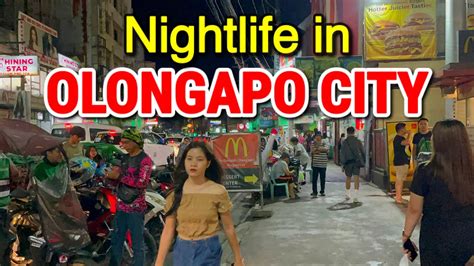Prostitutes in Olongapo

Historical Context and Economic Impact

Prostitution in Olongapo, Philippines, has a long and complex history tied to the presence of the U.S. military. During the 1980s and early 1990s, it became a major means of survival for many women in the city, which was then a booming town due to the nearby Subic Naval Base. The industry was so extensive that it was even supported by the state, despite being illegal. Women entertainers, euphemistically referred to as “hospitality women,” numbered in the thousands, with estimates suggesting around 9,000 registered and unregistered sex workers in Olongapo City alone.
Societal Impact and Current Realities

Contrary to popular myths, most women did not enter prostitution out of lust or greed. Instead, they were driven by poverty and a lack of alternative livelihoods. The stigma surrounding their work was severe, and many faced societal judgment. For example, Amerasian children, born to Filipino mothers and American fathers, often bore the assumption that their mothers had been prostitutes.
Personal Stories and Resilience
The closure of the Subic Naval Base in 1992 significantly impacted Olongapo’s economy, but prostitution persisted. The city became known for its “rest and recreation” industry, with numerous bars, clubs, and hotels catering to both locals and visitors. Despite efforts to regulate or eliminate the trade, it remains a reality, often hidden under the guise of legitimate businesses.
Efforts to address the issue have been made by organizations like YWAM Olongapo, which focuses on rescuing women from prostitution and providing them with support. These initiatives highlight the resilience of the women involved and their desire for a better life. However, the deeper-rooted issues of poverty and exploitation remain unresolved.
The Human Toll
Personal stories, such as that of Pia Agustin Corvera, who entered prostitution at the age of nine, reveal the harsh realities faced by many. These narratives emphasize the need for empathy and understanding rather than judgment. The societal stigma and emotional toll on those involved are profound, often lasting a lifetime.
In summary, prostitution in Olongapo is a multifaceted issue rooted in historical, economic, and social factors. Addressing it requires more than surface-level solutions; it demands a deeper understanding of the complexities involved and a commitment to creating meaningful change.
*TAGS* – Prostitutes Olongapo, Olongapo sex industry, prostitution in Philippines, Subic Naval Base, YWAM Olongapo, Amerasian children, poverty and exploitation